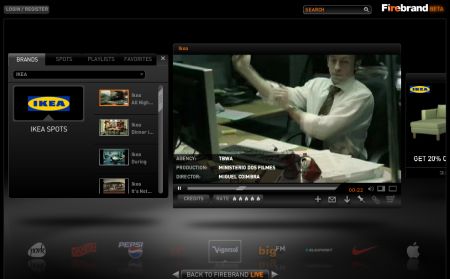von Roland Hachmann | Apr 1, 2008 | Ad News, Blog, Digital Marketing, Digital News, Marketing, Online Advertising
There is a standard joke around online advertising managers about the fear of those „chinese villages“ taking over one of your ad campaigns so that you receive the clicks you paid for, only all of them come from one and the same family (in China or India, or Eastern Europe or Antigua, etc. it doesn’t really matter).
But you don’t need to go very far away. Your next door neighbor might be part of a „click farm“. Even though he most likely never realised what he got himself into.
Just the other day I took a look at a site called OnlineTVRecorder.com (don’t want to give them any link credit). On that site you can record TV programms of any German TV Channel – most of which I wouldn’t even be able to access in this area of the country. You first record them, and then download and decode them. But you can only decode those that you „recorded“ in advance. This makes it similar to any VCR/DVD recorder and hence (I guess) a legal way of recording shows via the web.
So far so good. However, the system only works for you, when you pay per download with so called „good will points“. If you haven’t got enough points, you can’t download or decode any files.
And how do you get these points? There are two ways. Either you donate money, or you click on some of their ads. Yes, that’s right: you can click on the ads to receive good will points! You get points for clicks that advertisers pay a lot of money for (on aggregate).
I guess most users on this site aren’t fully aware of the fact that each of their clicks contributes to ripping of advertisers. Note: I am not saying „poor advertisers“ here! I am just saying that advertisers don’t get what they pay for when they signed the contract with these mediasites: intentional attention.
Clickworking is an interesting and positive trend, since it uses the minimal individual productivity of large crowds to achieve a large complex goal.
Clickfarming seems to be a dark side equivalent. Utilize the small contributions of a large crowd’s individuals who might not even (want to) realize that their few clicks are contributing to a large system of fraud.
I wonder how many other sites of this kind are out there? How much dubious content is paid for in this way? How many advertising campaigns bought on a pay-per-click basis have been corrupted by clickfarms like these?
If I was an advertiser and I saw one of my banners on one of those sites, I would ask my media agency or the publisher for my money back. And may be sue them.
von Roland Hachmann | Dez 20, 2007 | Blog, Digital Marketing, Marketing
This must be one of the busiest sites right now… So I tried it myself. Here is my elf.
von Roland Hachmann | Dez 20, 2007 | Ad News, Blog, Digital Marketing, Marketing, Online Advertising
This is a rather interesting online advertising approach from Norway:
One of Norways largest online news sources wanted to promote their online services. The idea: several copywriters comment live on the articles on the news portal, during the day and evening hours.

Within around 150 hours, more than 1,000 unique ads have been created this way. Enjoyable idea, and if the live comments by the copywriters were any good, people might have actually surfed the portal for quite some time just to read the ads…
von Roland Hachmann | Nov 29, 2007 | Ad News, Blog, Digital Marketing, Marketing, Online Advertising
Firebrand now launched, and it has a wide selection of TV commercials online to watch. You can filter them by brand, animation, celebrity, etc. I particularly like the filter-selection „banned“, which could be quite promising in the future.
What I miss: you can’t comment on the ads. You can rate them, but not comment on them. Might be due to lack of editorial staff, and I hope that is the only reason. Because some say, it might be, because advertisers have expressed concerns about people commenting on ads.

One intelligent feature: as you can see on the screenshot above: offers of the advertisers can be integrated as clickable banners. Not sure if that always corresponds to what has been shown in the ad, but it would make sense.
So who will actually use this? Some people who seek entertainment? They would go to YouTube, wouldn’t they? And the ad folks? Only if this becomes more complete than other ad databases (including YouTube).
And what about including good print advertising?
von Roland Hachmann | Nov 12, 2007 | Ad News, Blog, Digital Culture, Digital Marketing, Marketing Trends, Social Media Marketing
Interesting. There is a post at the „social media today“ blog that states that conversational marketing will outpace traditional marketing by the year 2012. The main obstacles at the moment seem to be:
“Manpower restraints†– 51.1%
“Fear of loss of control†– 46.9%
“Inadequate metrics†– 45.4%
“Culture of their organizations†– 43.5%
“Difficulty with internal sell-through†– 35.8%
The second point should be easier to manage, once the first point has been solved. But that needs success on point 5, which depends on point 3, because point 4 necessitates success on point 3. Confusing? Yes. But doable. And very necessary.



 Wo ich sonst so bin...
Wo ich sonst so bin...